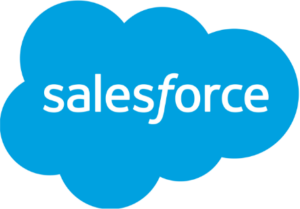Stop buying players. Start buying wins.
The Billy Beane approach to Sales Leadership
There is a brilliant scene in the baseball movie “Moneyball” where a data analyst gives manager Billy Beane, played by Brad Pitt, some (literally) game-changing advice:
People who buy ball clubs, they think in terms of buying players. Your goal shouldn’t be to buy players – it should be to buy wins, and in order to buy wins you need to buy runs.
I love a good analogy. And right now, I can’t get past the similarities between current sales leadership trends and that of most professional baseball managers in the nineties. Old school thinking, with most leaders following the herd.
Many sales leaders are asking the wrong questions. Or, at least, missing a few critical ones.
There is an overemphasis on pipeline analytics, and it’s come at the expense of an understanding of what buys wins.
Back to baseball for a minute.
Q: How do you win the World Series?
A: You get on base a lot.
I know that sounds boring, but it’s the quality of basic block and tackling (even for highly experienced and sophisticated salespeople managing the most complex deals) that separates the great sales teams from the rest.
Many sales leaders overthink strategy but forget about execution. Read on for the Billy Beane approach to sales leadership.

How to Get Your Team to the World Series on a Budget
1. Build Execution Skills
The best market intelligence in the world won’t deliver revenue unless your team knows how to execute when they get in front of the client. Focus on these things:
- Identify the key client meeting types that really move the needle (as opposed to the other 85% of activity). Meetings early in the sales process are critical – deals are won and lost on the front end.
- Get really, really good at executing these meetings (in other words, get on base a lot).
- Train and empower your front-line managers to coach these critical skills so that the whole team (as opposed to just the top performers) can make bigger contributions.

2. Team Performance > Individual Stats
Baseball is famous for its statistics. On-base percentage, slugging percentage, batting average, runs batted in and literally dozens more. Back in the nineties, most team owners and managers focused on the stars who dominated these stats.
Billy Beane changed the game by thinking about the performance of the team, not just the star players. When he lost his all-star hitter Johnny Damon to the Red Sox for $31 million at the end of 2001, Beane couldn’t afford a replacement superstar. But he was able to replicate him in the aggregate – across the team. And he got his team to the finals on a shoestring budget – by getting on base a lot.
Baseball thinking is medieval. They are asking all the wrong questions.
3. Reduce Strike-Outs
Let’s look at some different sales performance metrics. Here’s an analysis for illustrative purposes of a B2B sales team (I’ve blended and averaged the numbers across several healthcare and technology companies from mid-market to large enterprise to protect the innocent).
| Sales team size - 140 salespeople plus front-line managers | 150 People |
| Total annual revenue goal/quota - Average $1M quota per rep | $140 M |
| Total sales payroll plus marketing expenses | $25.5 M |
| Average number of “consequential” client meetings per salesperson per week - Enterprise can be lower, high velocity sales will be much higher | 5 |
| Total “consequential” client meetings per year - [5 x 150 x 45 weeks] | 33,750 |
| Average direct cost per client meeting - [$25.5 M / 33,750] | $755 |
| Your team’s “On-Base Percentage” - % Of client meetings that successfully gain the intended sales “Advance.” - Data taken from Manager “Ride-alongs” with their reps. | 45% |
| Cost of “Strike- Outs” - Direct annual cost of unsuccessful meetings - [(1005 - 55%) x $25.5M] | $14.025 M |
This very rough calculation highlights a few interesting facts:
- Based on front-line manager ride-along data, fewer than half of “material” sales calls achieved the call objective (this is not unusual, and I’ve seen lower). Even worse, most companies can’t even track this number, which is like managing a baseball team without knowing On-Base Percentage. This # is a critical output from manager field travel.
- Each meeting costs, on average, $755. This might seem high but it’s probably a significant underestimation of true cost – it’s based purely on direct labor costs, and it ignores the much bigger cost of lost revenue from a poorly executed meeting. In enterprise sales with high Average Contract Value, a single “strike-out” meeting can kill a deal and literally cost you millions of dollars of revenue. (And yet most companies don’t implement a robust pre-call plan process).
- The direct (salary) cost of the 55% of “strike-outs” is about $14M per year, and again, this ignores the much higher opportunity cost of lost revenue. Yet many companies this size will baulk at spending half a million dollars implementing high end skills training and an effective coaching process. Penny wise, pound foolish.
Few companies even collect the data listed above. Fewer can say what percentage of meetings are successful and even fewer understand why. Only a small minority of companies collect data that shows them which of their front-line managers know how to coach effectively. Yet they can spend days every month reviewing pipeline reports!!!
Plug your own numbers in and see what you learn. And if you can’t access each of these numbers easily, spend a little time with your sales operations team and find out. You’ll be amazed how it changes your thinking on the value of disciplined pre-call planning and empowering effective front-line manager coaching.

Moneyball
For those who love baseball (or even for those who love Brad Pitt, or Jonah Hill or even just statistics), check out Moneyball. Here are some short clips:
[su_youtube_advanced url=”https://www.youtube.com/watch?v=TpBcwGOvO80″ rel=”no” fs=”no”]
SWIFT™ for
Supercharge your CRM with a coaching and performance accelerator.
Interested in a fully integrated Salesforce app that delivers value-added call planning, transforms your managers from super-reps into coaches, and gives leaders a real-time dashboard of team competencies?
Swagger Sales™ trains your team to perform better and gives you the tools to track progress.
The dashboards bring all the information into one place – it’s really about accountability, you can look at it very quickly to see if you have a problem in a certain area.
Kim Moller, Senior Vice President of Sales
MiMedx Group, Inc


